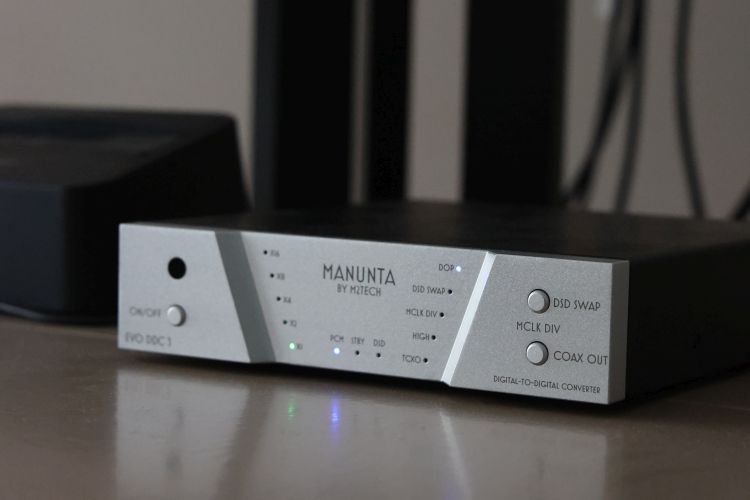
Review sample supplied by manunta-audio
Retail price: €780
First, there was the thumb drive-shaped original HiFace, which offered an affordable and simple solution for converting USB to S/PDIF audio. In 2010, it was something of a revolution in the audio scene for casual users and more experienced audiophiles since there were few digital-to-analog converters with USB inputs. Of course, there are limits to what can be done in a bus-powered thumbdrive-sized unit so M2Tech also offered the no-holds-barred HiFace Evo. This device could do it all, its plethora of connections catering to every possible need. I raved about the Evo almost 14 years ago, and even though it was succeeded by the Evo 2 at some point, my original Evo still works beautifully today. I used it back then to convert audio from my main PC which also functioned as a music vault, not even a server. And I also used it when reviewing DACs that did not have USB inputs. Since then, a lot has changed, and today, practically everyone streams music, either from a local NAS or directly from the Cloud, and DACs without USB have become scarce. Meanwhile, M2Tech has not been sitting idle, but they have introduced the Rockstars series, a more high-end range of components that include models such as the Young and Vaughan DACs, the Marley Headphone Amp, Nash Phono Stage, and others.
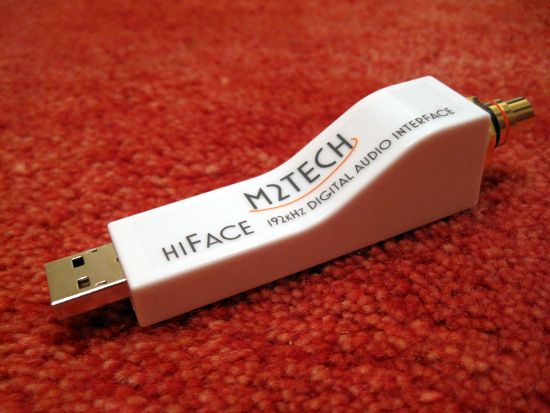
Original HiFace “Thumb drive” style USB to S/PDIF interface
Recently, I started using the HiFace Evo again as a converter for the active Genelec 8341A speakers with AES/EBU inputs. The music source is the work computer with access to Roon which runs on a server in the main listening room. The speakers also accept analog inputs, but in that case, the signal is converted to analog in the computer, back to digital in the speakers for the crossovers and processing, and then back to analog. Even with the extra conversion, it still sounds surprisingly good, but this is hardly ideal. In this scenario, the Evo provides a very noticeably tighter, faster, more precise, cleaner, and more articulate sound than the detour via the partly analog path.
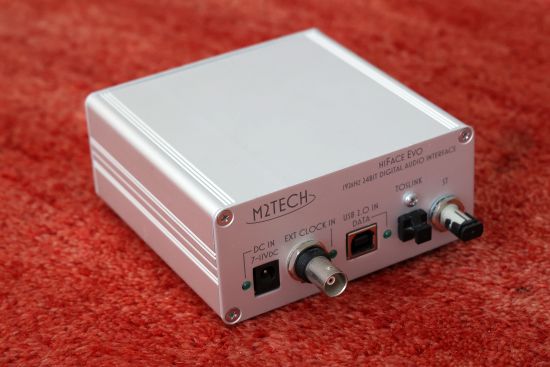
HiFace Evo “Swiss-Knife” USB to Digital interface
Many years ago, there was an issue with the driver which was later fixed, even though the Evo had become a classic by then. Great service! But of course, operating systems and interface standards change and evolve, and it is impossible to keep fully supporting 10+ years old hardware. While my Evo still functions perfectly, the Windows driver can sometimes respond erratically to certain sample rate changes, producing loud white noise upon track change. The issue was easily circumvented by having Roon resample everything to a single sample rate, but this finally prompted me to look for a replacement interface.
Initially, I was saddened to find that the M2Tech Evo 2 had been discontinued and there seemed to be no successor. But then, I found that M2Tech now had a daughter company named Manunta. And to my relief, they offer a very slick-looking successor to the Evo 2 named Evo DDC 3. Manunta also offers a DAC, a Phono Stage, and a Power Supply in the same form factor.
I found that AES/EBU converters are non-existent in the audiophile world and only exist in pro audio circles. As is common, these pro audio devices don’t look particularly handsome, but that’s perhaps not a deal breaker for most. However, what can most definitely be a dealbreaker for many is that these professional products often carry very serious price tags. This is where the Manunta Evo DDC 3 comes in perfectly. It looks handsome, is not too large yet well-built, and is sanely priced.
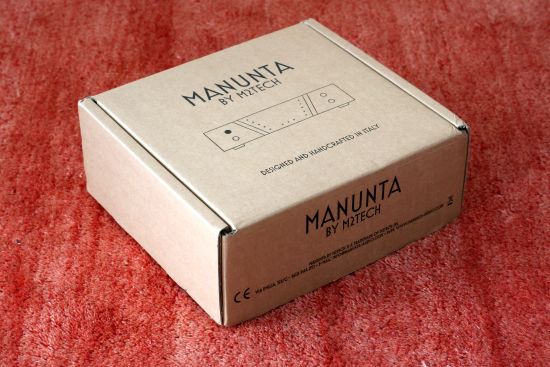
The box is made entirely from carton
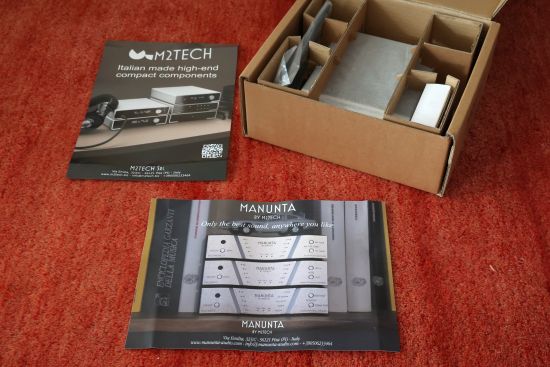
The Evo DDC 3 comes complete with a wall-wart power supply and an infrared remote control
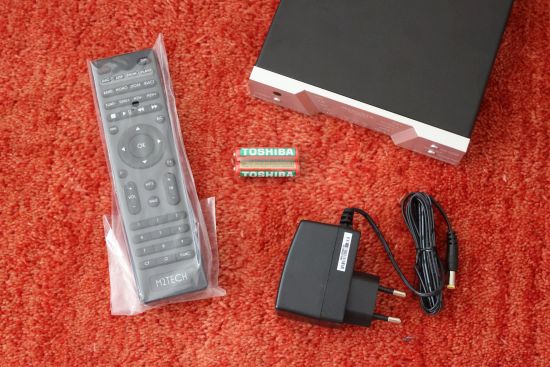
Manunta By M2Tech
Manunta by M2Tech was founded after carefully analyzing the consumer audio market. The idea behind the new brand is to offer audiophiles and music lovers a large portion of the M2Tech product quality at a lower price. This goal was obtained by simplifying the distribution chain. Manunta products are either sold directly to end-users or by appointed dealers worldwide. The cost saving is entirely redirected to the customer through increased value-for-money.
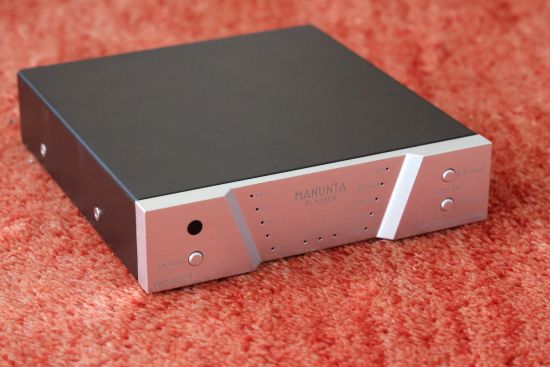
Evo DDC 3
The Evo DDC 3 Digital to Digital Converter implements an asynchronous USB interface, fully DSD-capable with selectable DSD/DoP support, full iPhone and Android smartphone app control via Bluetooth with S/PDIF, AES/EBU, optical Toslink, and I2S digital outputs. The I2S output in PS Audio standard makes high-resolution music transfer in either PCM and DSD from a smartphone, tablet or computer to an audio system. The coax output’s voltage is selectable between the standard 500mVpp and double 1Vpp, allowing long cable runs even in coaxial mode. The fully loaded remote control provides for complete control of both Evo DDC 3 and most audio players running on the computer attached to its USB input, as well as other Manunta products.
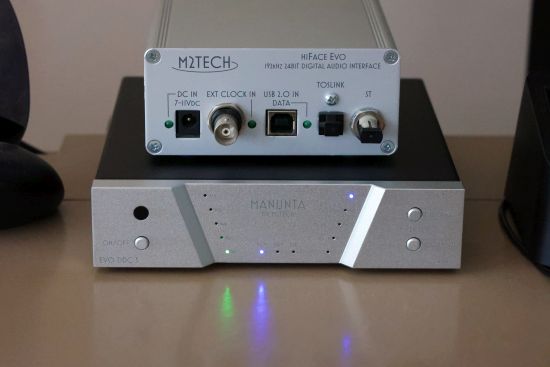
Slimmer, wider, and deeper than the HiFace Evo, fitted with a beautifully sculpted fascia, and with all the connections only on the rear end, the Evo DDC 3 is perfect to set atop a DAC or desk. Like people on TV often do, the DDC 3 looks larger in photos; the unit measures a mere 150x160x35mm (wxdxh).
Its front panel is hugely informative while the included IR remote control covers all of the unit’s audio functions, dimming the LEDs in 4 steps, with a 5th step that completely switches off the LEDs. A rear-panel switch provides two modes for the front panel power button: standby or full-off.
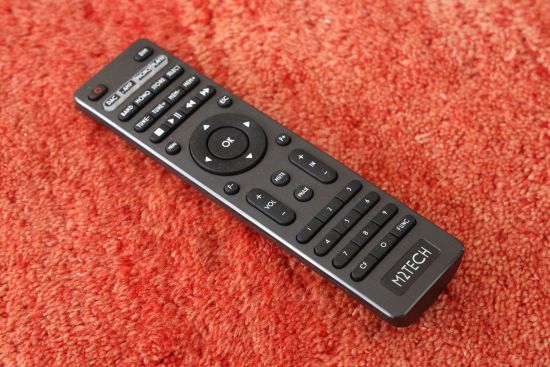
In further comparison with the HiFace Evo, even though the Evo DDC 3 connections are now only on one side of the unit, the unit still offers a comprehensive set of outputs that should fit very nearly every possible purpose. The only missing connections compared to the HiFace Evo are ST Glass, BNC, and external clock. At this price point, I think this is a very sane compromise. Besides, ST Glass is only still seen on classic audio equipment, and I think the second S/PDIF output will probably also not be missed by many. The I2S connection has remained but was changed from an RJ45 to the more common HDMI connector, and Manunta has opted to adhere to the PS Audio “standard” for the connector pinout.
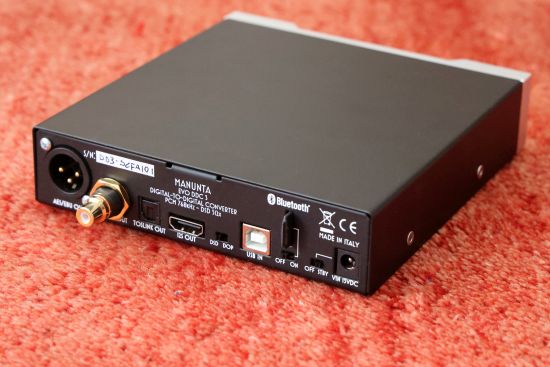
Incidentally, the Evo DDC 3 requires 15V DC (5.5/2.1mm jack, tip positive) and comes complete with a standard wall-wart switching power supply, but it can also be powered with a Battery Power Supply or a more upscale switched or linear power supply. For this purpose, the Manunta Evo Supply 3 or M2Tech’s Van Der Graaf MkII are prime candidates, but other supplies can also be used. Earlier experience unveiled that the power supply can greatly influence the interface’s sound quality, usually providing a fuller, more tonally saturated, and often sweeter and calmer sound.
The converter accepts and outputs 44.1kHz to 192kHz PCM in 16-24 bits on all outputs and up to 768kHz in 24 bits via I2S. DSD is accepted and output in 64x to 512x Native via I2S and 64x to 256x DoP via the other outputs.
The Evo DDC 3 is natively supported by Linux, OSX, and Windows 10 or 11. A driver can be downloaded from the Manunta website but is only required with Windows 7 or 8.1 and certain Windows 10 releases, as well as with Windows 11 to use ASIO mode to override the 192kHz limitation on WASAPI and enable DSD support. I can confirm that Windows 11 immediately recognized the converter and played instantly via WASAPI without hiccups. Switching sample rates is seamless and quiet, and importantly, the produced sound quality is superb!
Use Case
The Evo DDC 3 can be employed anywhere the user requires conversion from USB to electrical or optical S/PDIF, AES/EBU, or I2S. Naturally, the DDC 3 will also come into play as a benchmark when assessing other digital interfaces. An obvious use case will be in combination with Music Servers or streamers that only have USB outputs and that need to be combined with DACs that do not have a USB input. Another obvious use case, and the one that applies to me and for this review, is computer audio systems, where a regular computer needs to output sound to active speakers. If these speakers have digital inputs, then the Evo DDC 3 is all you need. Otherwise, you would need to add a DAC, which Manunta also has in its portfolio.
Next: Roon Setup, Earlier Experiences, System Context, and Listening
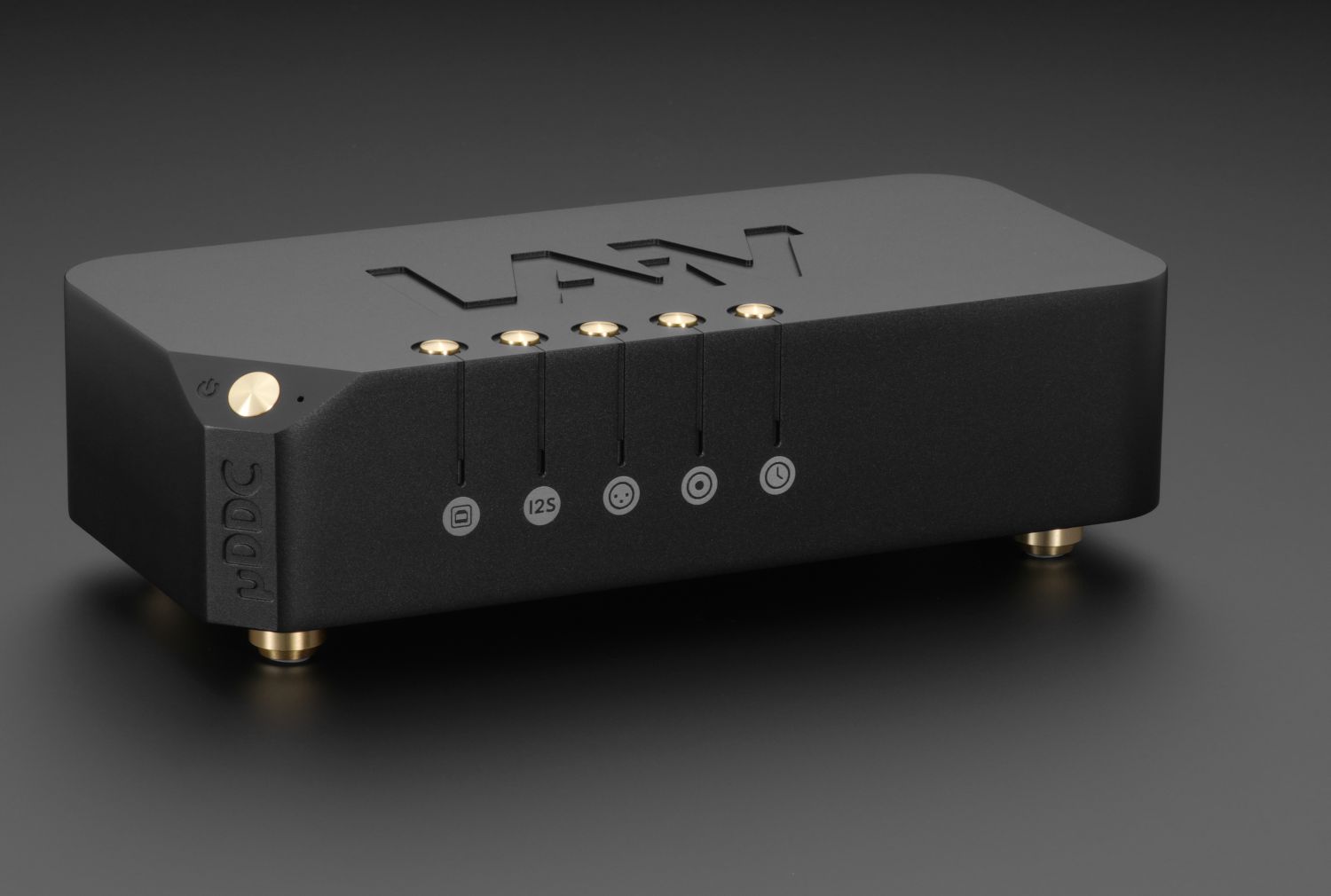
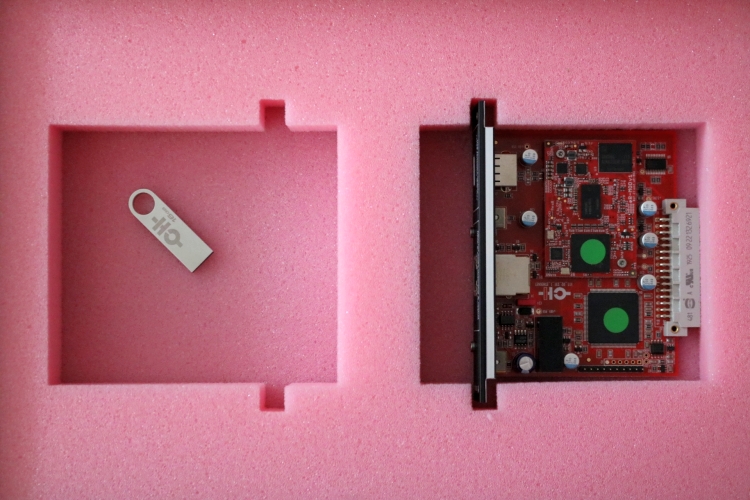
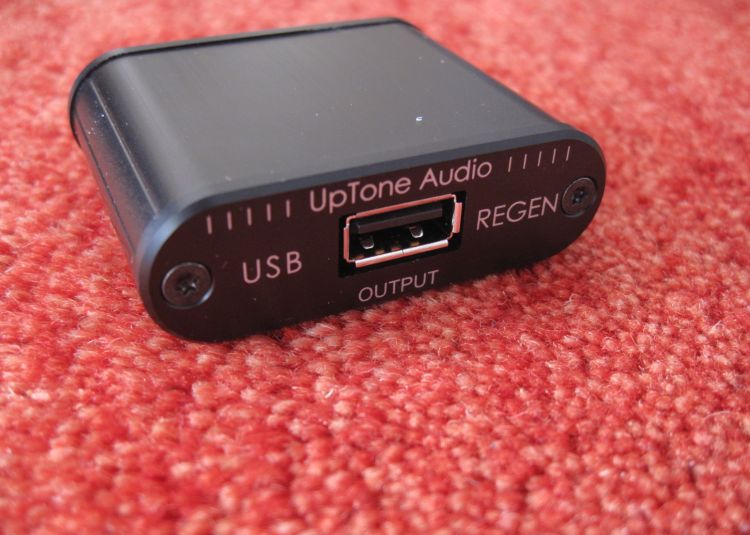
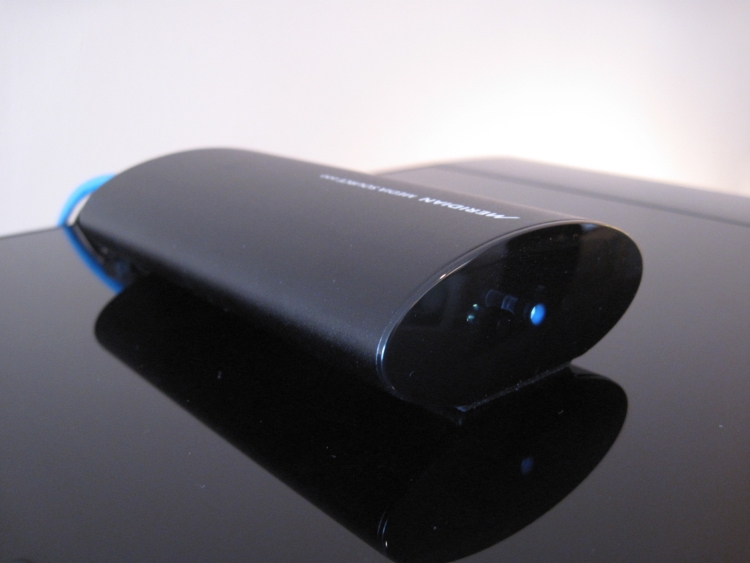
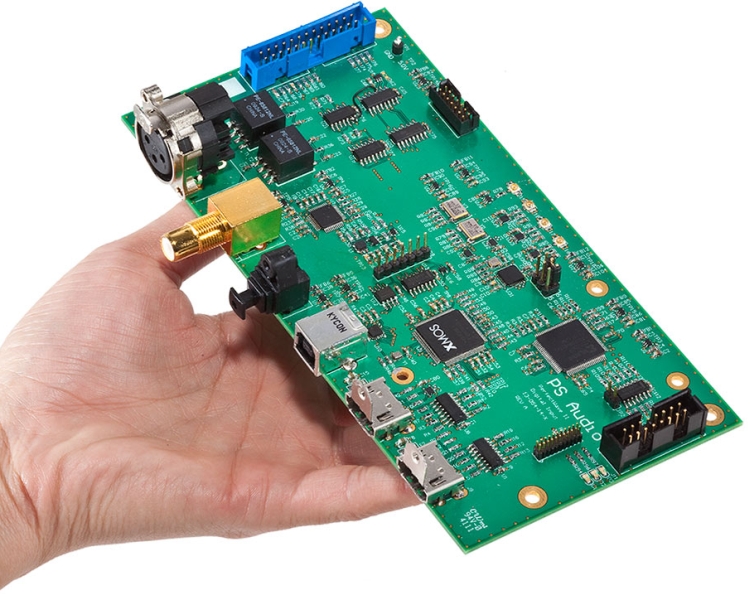
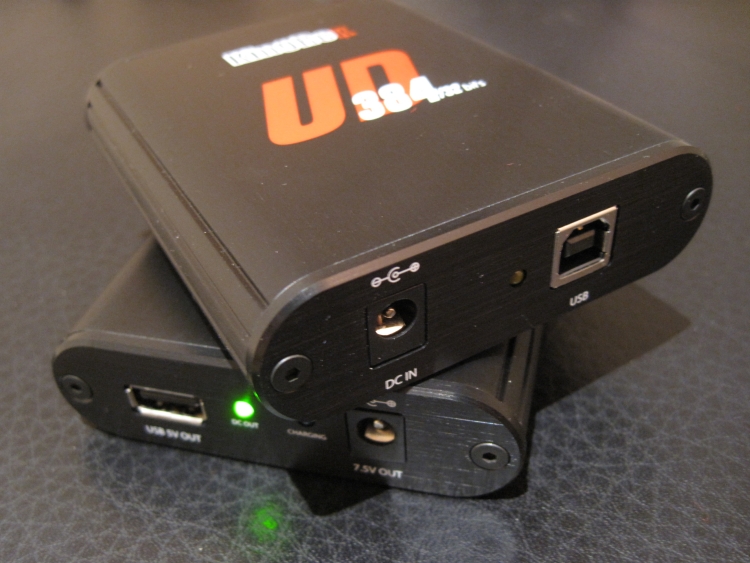
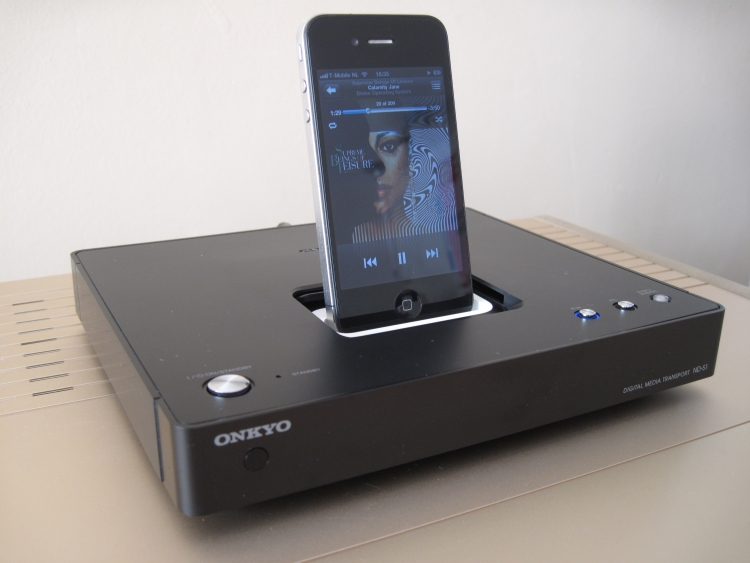
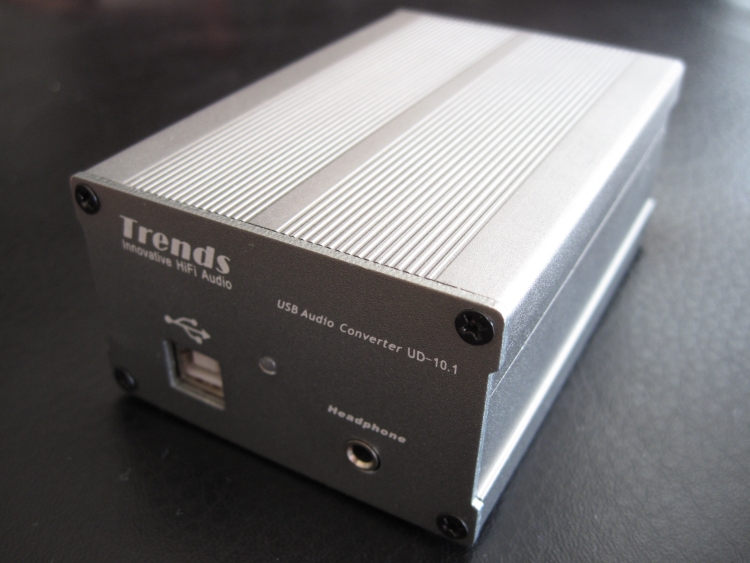
I am a fan of HiFi Advice. I love that Manunta (and Denafrips, etc.) have all-to-all converters. By the way, I have to use one of them. However, we are in 2023. How come that USB isn’t recognized as the most common high-end digital input? This is very confusing. Sad.
I think it is safe to say that USB is indeed the most common digital input for consumers and high-end audio. For pro-audio applications, however, AES/EBU is preferred, in part for its more rugged and predictable performance (high signal level, balanced, can travel great distances) and probbaly in part due to legacy (the standard was set far earlier than USB). And that is where converters like these come in.
BTW, while it is preferable to have a single standard, there is no single perfect format. AES/EBU has its weaknesses and non-ideal properties (synchronous and therefore jitter-sensitive), but so does USB (theoretically more ideal but in practice highly sensitive to the implementation of the interface on both ends).